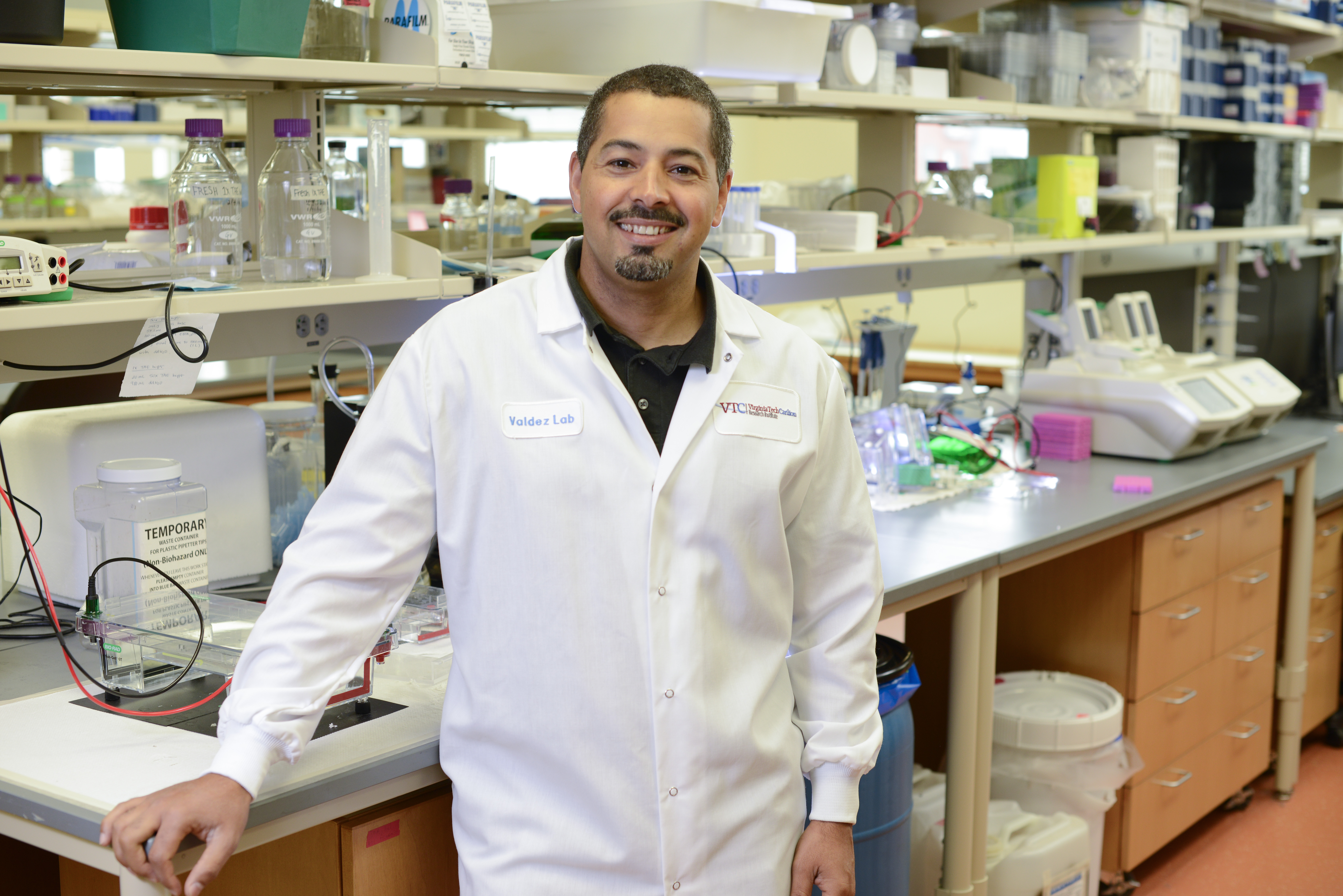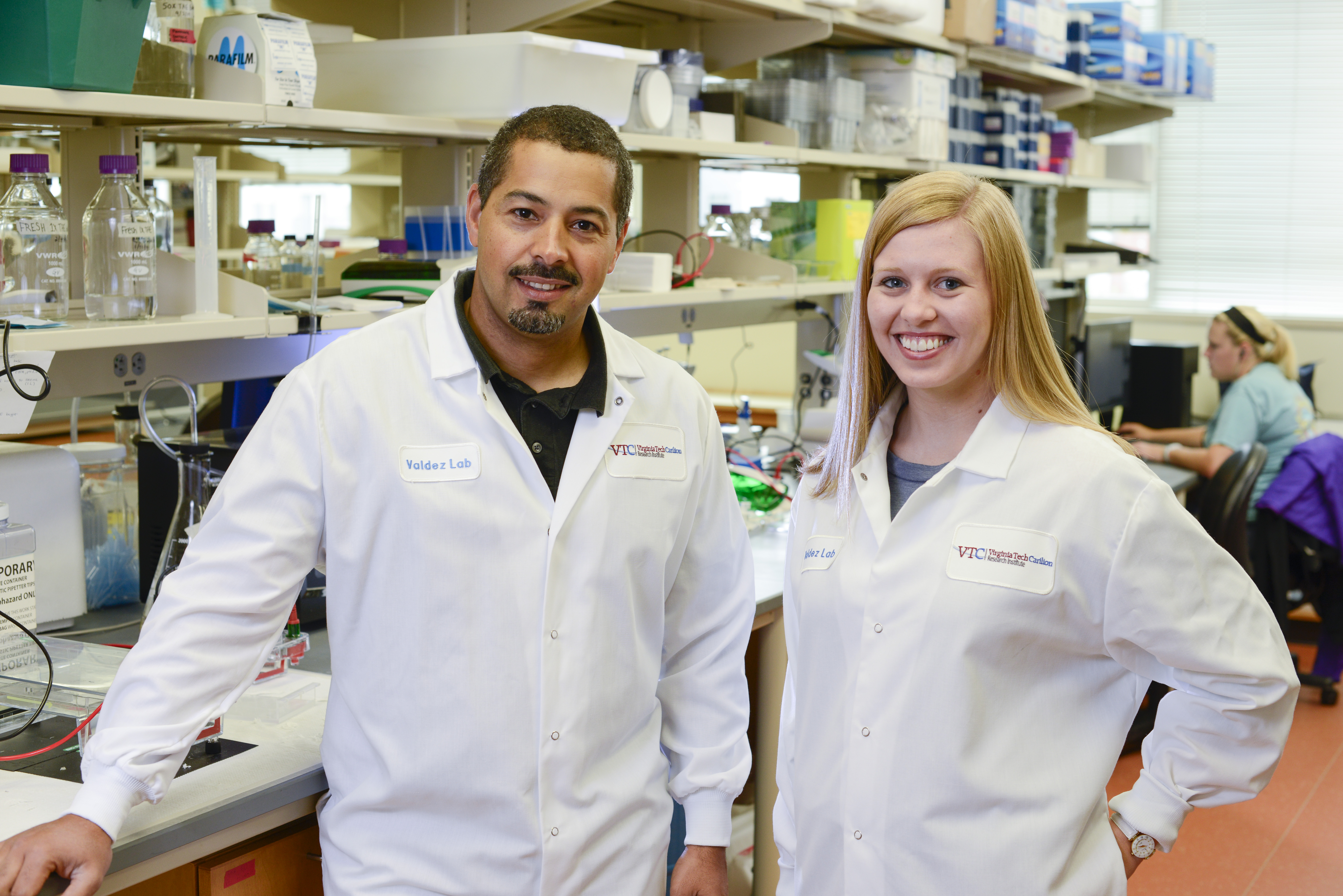Scientists unexpectedly find ALS affects sensory neurons involved in movement

The same nerves that keep a person from crushing a flower or dropping a water glass are teaching scientists something new about amyotrophic lateral sclerosis.
Commonly called ALS or Lou Gehrig’s disease, the neurodegenerative disease kills off motor nerves and brain cells and inhibits the muscles responsible for moving, eating, and breathing. ALS has no cure, in part because of the difficult nature of studying the affected cells. A discovery led by Gregorio Valdez, an assistant professor at the Virginia Tech Carilion Research Institute, might make researching the mechanisms of the disease easier.
“We discovered that proprioceptive sensory neurons connected with muscles are affected early in ALS while those connected with tendons that sense changes in muscle tension are mostly spared,” said Valdez, who is also an assistant professor of biological sciences in Virginia Tech’s College of Science. “That was a big surprise, and it shows that ALS targets select neurons, particularly those with critical functions in muscles.”
In the study, published in the Journal of Comparative Neurology, Valdez used a rodent model to examine proprioceptive sensory neurons. These neurons connect with muscles and motor neurons in the spinal cord to help animals – including humans – understand their physical sense of self.
“Proprioceptive sensory neurons are much easier to study than motor neurons, the main cells affected in ALS,” Valdez said. “Sensory neurons can stay alive for weeks and even months in the laboratory. This relative longevity can give scientists a better tool to identify and test potential therapeutics for the disease.”
The researchers found that neurons degenerated before neurological symptoms appeared. They also discovered that degeneration begins in the cells’ connections with muscles before spreading to the spinal cord.
“Understanding how and why certain cell types resist neurodegeneration and others succumb is a critical step in designing interventions,” said Erin Foff, an assistant professor of neurology at the University of Virginia and a medical doctor who treats ALS patients. She was not involved in this research. “Dr. Valdez’s exciting work offers additional information regarding a poorly understood feature of ALS.”
Written by Ashley WennersHerron.





